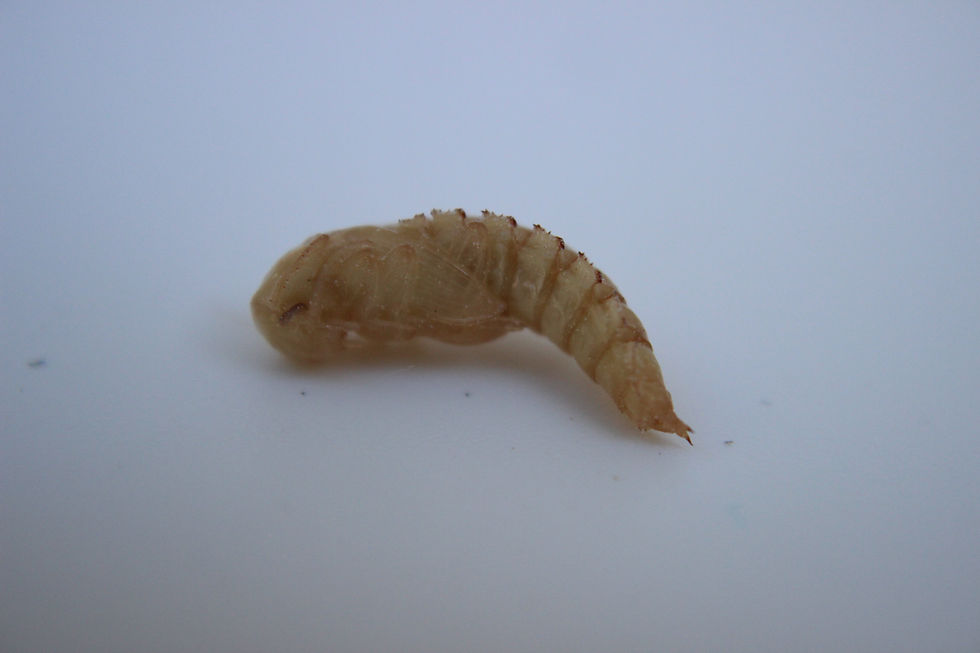Mealworm Care & Breeding
- Hayley Fox

- Aug 7, 2023
- 2 min read

Mealworms (Tenebrio molitor) are one of, if not the easiest, feeder insects to create a colony with, and are nutritionally similiar to crickets. They're also extremely easy to get your hands on, making them an easy, healthy, and jump-free feeder option for many reptile and carnivorous insect species.
HOUSING
T. molitor can be housed in a variety of materials, from glass aquariums to plastic tote containers. Avoid things like styrofoam and cardboard as they can easily be chewed through.
Mealworms need a nice, deep bedding to lay eggs, hide, and mate in. This can be achieved with something as simple as 2-4 inches of plain steel cut oats (be sure to bake oats at 300F for 30 minutes to eliminate risk of grain mites). At The Cabana, we opt for The Peculiar Dragon's nutritional bedding recipe. This allows even freshly hatched worms to start eating good food immediately and encourage growth.
Be sure to provide some cardboard egg crate for climbing, breeding and egg laying.
TEMPERATURE
Mealworms can thrive in many temperatures and environments, though they do best when kept above 75F. Warmer temperatures encourage activity, mating, and eating, which is necessary to gutload. Cooler temperatures or being refrigerated causes dormancy, meaning the worms will not eat not pupate. To avoid temperatures dropping too low, a heat mat or strip of heat tape can be provided attached to a thermostat set no higher than 91F.
DIET & FEEDING
Similar to the diet outlined in our Superworm Care & Breeding guide, mealworms thrive on a diet varied with rich, leafy greens. We also offer any Pangea mix that is left after feeding our geckos, along with the Buggy Noms gutload from our friends at The Peculiar Dragon. This species is not finicky about hydration or prone to cannibalism, so they can go longer between feeds, though we find it optimal to offer fresh food every two to three days.

BREEDING
Mealworms are almost painfully easy to breed and are an extremely prolific species, 10-15 beetles will you a great start to a colony.
Large worms reach their maximum size at ~1.5 inches, and will begin to pupate shortly after. Once they have hatched, beetles will immediately seek out others to begin the breeding process.
Pupae, eggs, and worms do not need to be kept separately from beetles at any time, they will be left alone so long as food is provided. Within a few weeks, you should begin to see small worms coming to the surface to eat.
Happy breeding!



Comments